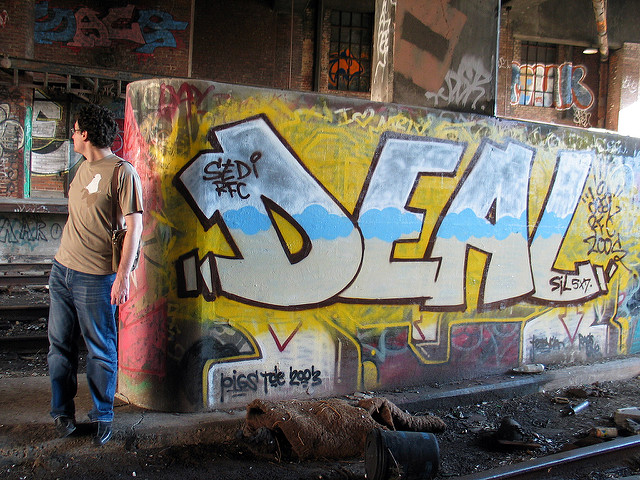
Image Credit: Geoff Stearns
When you are in the middle of a negotiation, how do decisions get made? All too often a lot of us end up leaving these types of decisions up to chance no matter what negotiation styles or negotiating techniques we are using. These decisions can take on a lot of different disguises including if we are talking with the best person to be doing the negotiating for the other side, if we’ll negotiate in person, what will be talked about, how long it will last, etc. We need to take the time to ask ourselves about how we want to design the deal that we want to get.
Who Should Be Involved In The Negotiation?
One of the things that we often don’t spend a lot of time thinking about before a negotiation starts is just exactly who we should be negotiating with. You’d think that this would be a fairly obvious question with an obvious answer, but it isn’t. The more time that you are willing to spend thinking about this issue, the more likely you are to identify new sources of value perhaps even identify some promising deal structures.
Your goal here has to be to be able to identify what are called the “high value” individuals. These are going to be the people who are in a position to make sure that the deal that we craft will create the greatest amount of value. In order to determine who these people are, you’re going to have to take a look at the complete list of influential players, agents, deal blockers, and other people who are representatives of larger groups. You are going to want to know who will sign off on the deal and who will be tasked with implementing it. If you take the time to do this correctly, then you’ll have a clear understanding of who you should approach to get the negotiations started.
Where Should The Negotiation Be Held?
Welcome to the 21st Century! What this means for you is that when it comes to determining how you want to conduct your next negotiation, you have a number of different possibilities available to you. You are going to have to decide if you want to meet in person, talk over the phone, communicate electronically, or combine these some or all if these formats.
Let’s face it. Given the option, just about all of us would rather negotiate on our home turf. Your familiarity with your office puts you at ease when facing a challenging negotiation. In addition, when negotiating at home, you control the environment, including things like the arrangement of the meeting room. Don’t forget that meeting on your home turf is also cheaper and more convenient.
However, it turns out that if you are willing to do some traveling and go to the other side’s office, you just might open up some advantages that you can’t get at home. It will clearly show the other side that you are willing to “go the extra mile.” Next, it gives you an opportunity to learn about both the other party’s organization and culture. As the negotiation progresses, you might suggest alternating locations to give both parties a chance to learn and demonstrate their commitment.
Although these days you have other options besides meeting face to face, we need to keep in mind that when we try to negotiate by using phone or computer, where vocal or visual cues are lacking, negotiators tend to have difficulty picking up clear social cues from one another. Misunderstanding, conflict, and wasted time can result and make closing the deal difficult. These approaches may not the cost savers that they initially appeared to be.
Is It In Our Best Interest To Present A Draft?
Let’s face it – negotiations can go on for a long time. We are always looking for ways that we can speed them up. One approach to consider is rather than negotiating a deal from scratch, you might instead present another party with a draft agreement, or standard-form contract, prepared with your legal counsel. Using draft agreements is a commonly used tool in government and corporate negotiations. You’ll need to realize that such drafts aren’t always appropriate; however, when used correctly they can increase your influence in the negotiation.
As negotiators we need to understand what the power of a draft is. Using what is called the “anchoring bias”, the person who makes the first offer in a negotiation has the power to sway the following discussions in the direction that they want them to go. The power of the anchoring effect also extends to deal making. You might want to work with the other side to create a draft because when negotiators work together on a draft agreement, they get on the same page from the start. This collaborative process can improve their odds of finding common ground as compared with simply exchanging a series of proposals that were created separately.
What All Of This Means For You
Our goal for participating in a principled negotiation is to be able to reach an agreement with the other side that will give us the deal that we are looking for. All too often when we go into a negotiation, we leave many of our most important decisions in negotiation up to chance. We need to ask ourselves key questions about deal design before we start our next negotiation.
Before we start a negotiation, we need to first ask ourselves just exactly who needs to be involved in the negotiation. Your goal here has to be to be able to identify what are called the “high value” individuals who can help you to get the deal that you are looking for. Next, you are going to have to decide where you want the negotiations to take place. On your home turf is always a popular choice. However, you may want to travel to the other side’s office to show them how committed you are and to observe their environment. In order to move a negotiation along faster, it can be helpful to show up with a draft. It may not be needed, but by anchoring the negotiations you will have staked out your starting point.
In any negotiation we don’t want to leave things to chance. Instead, we’d all like to design a solution before the negotiations start. The good news is that simply by asking ourselves a series of questions before the negotiations we can capture the information that we’ll need in order to get the best deal possible out of our next negotiation!
– Dr. Jim Anderson
Blue Elephant Consulting –
Your Source For Real World Negotiating Skills™
Question For You: How important do you think where a negotiation is held is?
![]() Click here to get automatic updates when The Accidental Negotiator Blog is updated.
Click here to get automatic updates when The Accidental Negotiator Blog is updated.
P.S.: Free subscriptions to The Accidental Negotiator Newsletter are now available. Learn what you need to know to do the job. Subscribe now: Click Here!
What We’ll Be Talking About Next Time
Let’s face it: conflict happens in every negotiation. The very process of negotiating using our negotiation styles and negotiating techniques with someone seems to open the door to allowing conflict to come in. How do we deal with conflict when it shows up? All too often our first response is to try to find a way to correct the way that the other side is seeing the world. We’ll take the time to tell them why they are wrong and, of course, why we are right. The problem with this approach is that it rarely works and will often make the current situation even worse. What we need is a different way to deal with conflict situations.

